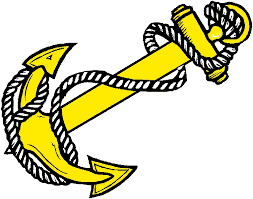Weighing Anchor Or Dropping A Mooring Under Sail
 We discussed dropping an anchor under sail in a previous article, so now that you know how to drop an anchor or pick up a mooring ball under sail lets look at how you weigh (lift/retrieve) your anchor or drop the mooring and get underway under sail.
We discussed dropping an anchor under sail in a previous article, so now that you know how to drop an anchor or pick up a mooring ball under sail lets look at how you weigh (lift/retrieve) your anchor or drop the mooring and get underway under sail.
Weighing Anchor Under Sail
A few things that need to be understood before you start the process
- The windlass is designed to lift the anchor chain from the sea bed and not to pull the boat forwards; that is the job for the engine and propeller. When you are weighing anchor under sail, this is of course not possible, so you will have to use the windlass to some degree to maneauver the boat to get it above the anchor to break it free.
- Once the anchor is up, you will need to get underway immediately to prevent drifting downwind. If there are boats behind you, you face the danger of colliding with them, so be ready to sail as soon as the anchor clears.
- Before starting this process, assess your surroundings. Look to see where all the boats are located, how they swing, your exit route out of the anchorage, any potential obstacles and decide on a plan as to how you intend to sail out of the anchorage. For example – do you want to be on port or starboard tack once you get underway, how much manoevre room you have etc.
The Anchoring Procedure
- Hoist the main sail only and leave the main sheet completely loose. Because the boat is being held by the anchor, the boat will be head to wind, so the sail will luff and have no power as you raise it.
- Once the sail is up, get the crew member responsible to operate the windlass in position. If the wind is very light you may want to pull the anchor chain in until is pulls tight, the weight of the chain (scope) will then pull the boat forwards slowly. As the chain slackens you can now wind the chain in until it is tight and wait for the same thing to happen. By using this method you are using the weight of the chain to pull the boat forwards and are retrieving the chain form the ocean floor as it slackens off with the boats forward motion. If the wind is strong and you cannot use this method, the thing to do is use the main sheet to power up and then depower the sail by quickly releasing it as you get some forward motion. This is a bit more tricky but with some practice you will find you can use the main to creep up on the anchor.
- Once the anchor has broken free, you need to get wind in the sails and sail out of the anchorage. You will find that once the boat starts drifting backwards it will turn sideways to the wind.
- In order to control which side you want to windward (which is something you would have decided before you started this maneuver) you can use the rudder. For example, if you want to be on starboard tack once the anchor has been retrieved, turn the rudder hard to starboard – because the boat is going backward being pushed by the wind, the stern will kick to starboard and the bow will swing to port.
- You will very quickly find yourself on a starboard tack, if you want to be on a port tack then you do just the opposite.
- When sailing out of an anchorage you should be on a beam reach, if you have any doubt as to whether you can make it around the bow of a boat (remember the anchor chain extends out a lot further than the bow) fall off onto a broad reach and go around behind the boat.
Dropping a mooring under sail
This maneuver is much easier than doing it while anchored because all you need to do is release the one end of the snubber line which is through the eye on the penant on the mooring ball and retrieve the line. The same preparation as before is required ie. raise the main sail, plan your exit from the mooring field and get your crew positioned. Once the boat is free, use the rudder as previously explained to get the boat onto the desired tack and sail out of the mooring field into clear water before deploying the jib.
As always, be prepared. Make sure you have your plan worked out and your crew fully understand what is expected of them and execute your plan in a calm and collected manner.





